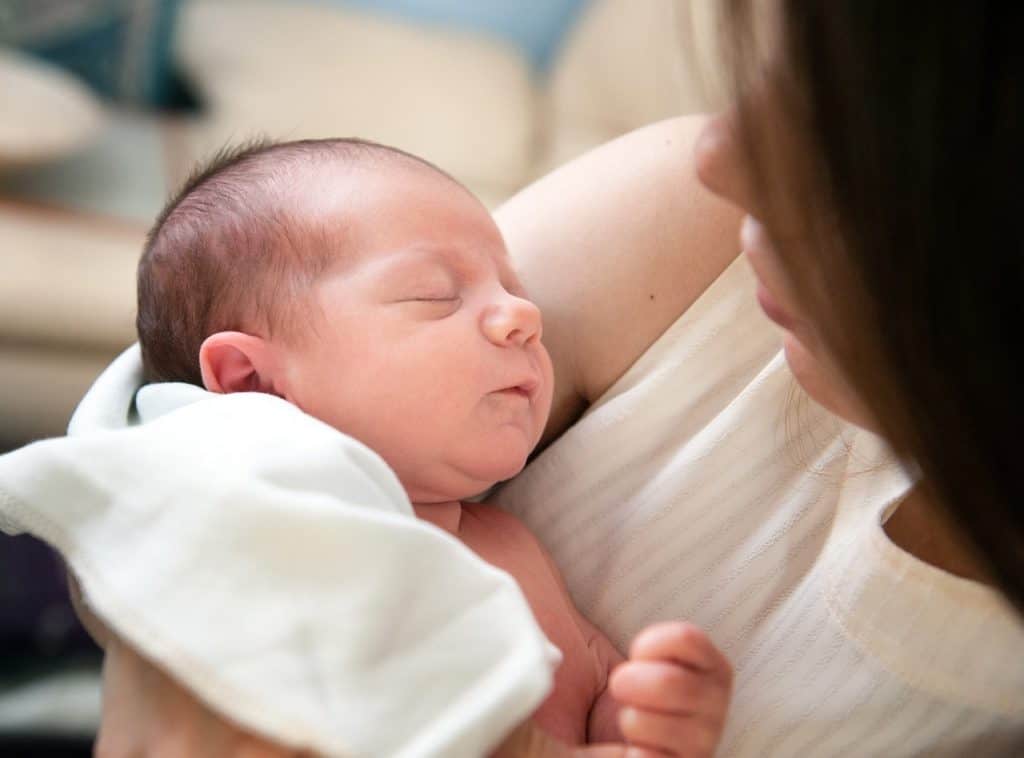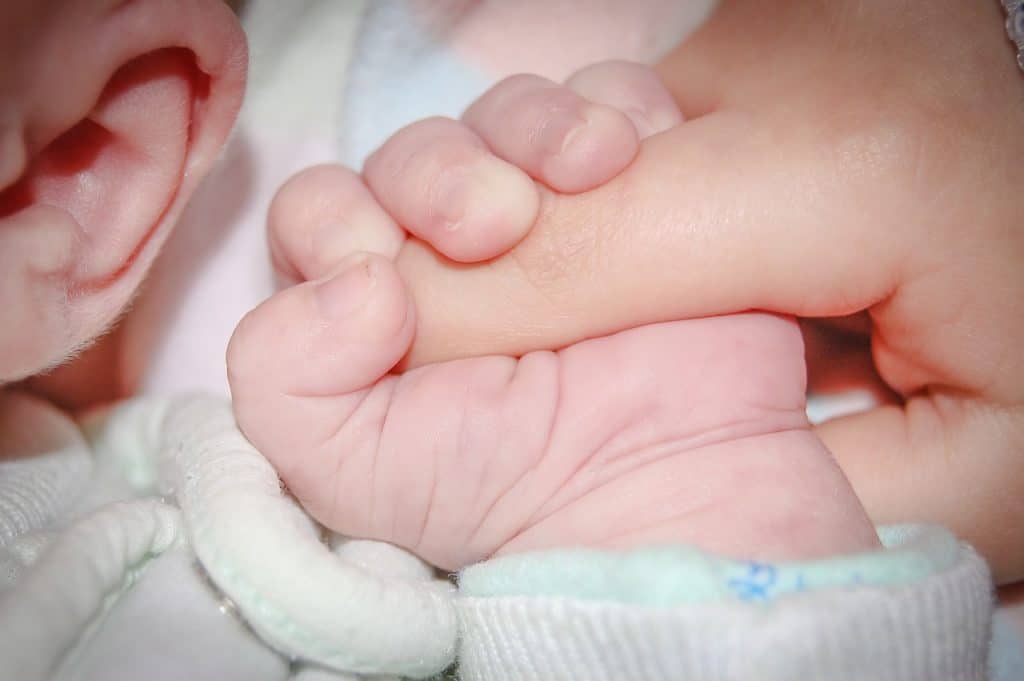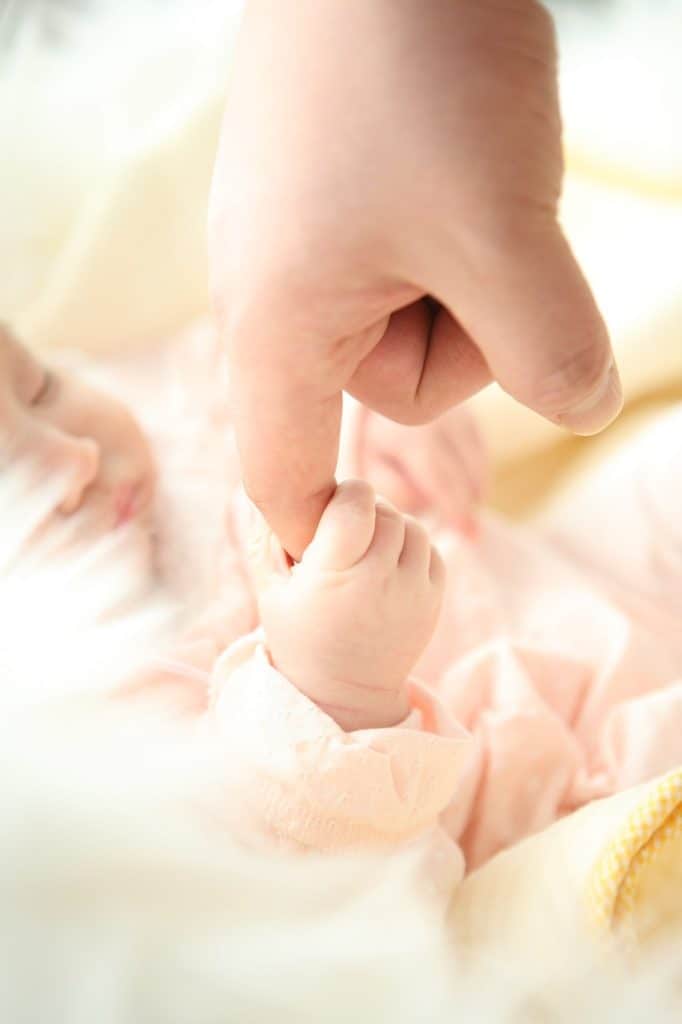Umbilical cord blood and tissue collection in Pasadena Texas
Hey there! Did you know that in new parents have the option to collect their baby’s umbilical cord blood and tissue?
This pain-free and non-invasive procedure involves a trained healthcare professional collecting the cord and placenta after the usual clamping and cutting. The cord blood is extracted using a sterile needle and stored in a specialized bag with anticoagulants to prevent clotting.
Meanwhile, a small piece of the cord tissue is collected and placed into a sterile container. Both cord blood and tissue are then transported to a laboratory for processing and storage.
By collecting these valuable stem cells, parents can potentially provide their child with life-saving treatments in the future. So if you’re expecting a little bundle of joy, consider this safe and effective option for your family’s health.


Umbilical cord blood and tissue storage near Pasadena TX
Did you know that umbilical cord blood and tissue can be valuable sources of stem cells that have the potential to treat a wide range of diseases?
That’s right! To ensure these stem cells are preserved, they are collected at the time of birth and stored in specialized facilities. The most common method of storage is cryopreservation, where the stem cells are slowly frozen and stored in liquid nitrogen at -196°C.
This way, they can be retrieved and used for medical purposes for many years to come. Cord blood banks even offer the option to store the umbilical cord tissue, which contains a different type of stem cell that can also be used for medical treatments.
It’s essential to store umbilical cord blood and tissue properly for their potential use in future medical treatments.

CORD BLOOD REGISTRY IN PASADENA TEXAS
What is Cord Blood banking in Pasadena TX?
Have you heard about cord blood banking ? It’s a really cool procedure that’s gaining a lot of attention in the medical world because of its potential to help treat a variety of diseases and conditions.
Basically, cord blood banking involves collecting and storing stem cells from a newborn’s umbilical cord. These stem cells are super valuable and can be used to treat illnesses like cancer, blood disorders, and genetic diseases.
That’s why many parents-to-be are considering cord blood banking as a way to protect their child’s health in the future. The process of collecting and storing the cord blood is pretty straightforward. It’s collected right after birth and sent to a specialized facility for processing and storage.
The cost of storage varies depending on the provider and the length of storage time chosen. There’s a lot to consider when it comes to cord blood banking, but it’s definitely worth looking into if you want to give your child the best possible chance at a healthy future.
Pasadena Texas
Welcome to Pasadena, Texas – a vibrant city nestled in the heart of Harris County, just southeast of Houston. With a rich history dating back to the late 19th century, Pasadena has grown from a small farming community to a bustling metropolis, attracting visitors and residents alike with its charming neighborhoods, diverse culture, and thriving economy. Known as the “Strawberry Capital of the World” for its once-thriving strawberry production, Pasadena has since evolved into a major hub for oil and gas industries, aerospace technology, and healthcare services.
But beyond its industrial success, Pasadena prides itself on its strong sense of community and dedication to preserving its heritage. From its picturesque parks and recreational activities to its renowned annual events such as the Strawberry Festival and the Pasadena Rodeo, there is never a dull moment in this dynamic city. Join us as we explore all that Pasadena has to offer and discover why it is truly a hidden gem in the Lone Star State.
1. History of Pasadena TX
Pasadena, Texas has a rich and diverse history that dates back to the early 1800s when it was inhabited by the Karankawa and Akokisa Native American tribes. The area was named after Pasadena, California in 1893 by John H. Burnett, who was a prominent businessman and landowner. The city was officially incorporated in 1928, and its growth was heavily influenced by the oil industry in the early 20th century. Over the years, Pasadena has continued to evolve and flourish, becoming a vibrant and thriving community known for its industrial, cultural, and recreational opportunities. Today, Pasadena remains a beloved city with a strong sense of community and a deep appreciation for its rich history.
2. Major industries in Pasadena
Pasadena, Texas is a bustling city with a strong economy supported by a variety of major industries. The city’s prime location near the Houston Ship Channel and major highways make it a hub for trade and commerce. The energy industry, specifically oil and gas, is a major contributor to Pasadena’s economy, with several large refineries and petrochemical plants located within the city’s limits. Manufacturing is also a significant industry in Pasadena, with a focus on products such as plastics, chemicals, and machinery. Additionally, the healthcare and technology industries have been growing in recent years, providing a diverse range of job opportunities for residents. Overall, the diverse and thriving industries in Pasadena make it a desirable location for businesses and individuals alike.
3. Population and demographics overview
According to recent population data, Pasadena, Texas has a total population of approximately 153,520 residents, making it the 29th largest city in the state. The city has a diverse demographic makeup, with a majority of the population identifying as Hispanic or Latino (63.3%), followed by White (29.8%) and Black or African American (4.2%). The median age in Pasadena is 33.6 years, slightly younger than the national average of 38.2 years. Additionally, the city has a higher percentage of foreign-born residents (27.8%) compared to the national average of 13.7%. This demographic overview highlights the rich cultural diversity and relative youth of the population in Pasadena, Texas.
4. Public transportation options available
For residents and visitors alike, Pasadena, Texas offers a variety of public transportation options to make navigating the city convenient and efficient. The city’s bus system, known as Pasadena Transit, provides transportation to major points of interest and connects with other regional transit systems. Additionally, the city offers shuttle services for seniors and individuals with disabilities through its Access Pasadena program. For those looking for a more eco-friendly mode of transportation, there are multiple bike sharing programs available, as well as designated bike lanes throughout the city. With these public transportation options, getting around Pasadena is easy and accessible for all.
5. Prominent educational institutions in Pasadena
Located in the heart of the Greater Houston Area, Pasadena, Texas is home to several prominent educational institutions. These institutions provide a variety of educational opportunities for students of all ages, from early childhood education to post-secondary degrees. Among the most well-known institutions in Pasadena are San Jacinto College, the University of Houston-Clear Lake, and Texas Chiropractic College. These institutions have a history of academic excellence and offer a range of programs and resources to support student success. With their strong academic reputations and dedicated faculty, these institutions contribute greatly to the educational landscape of Pasadena.
6. Parks and recreation opportunities
Pasadena, Texas is home to a variety of parks and recreation opportunities that cater to the needs of its diverse population. With over 40 parks and green spaces throughout the city, residents and visitors alike can enjoy a range of outdoor activities such as hiking, biking, and picnicking. Some notable parks include the picturesque Strawberry Park, which features a playground and sports facilities, and the iconic Pasadena Skatepark, a popular destination for skateboarders and BMX riders. In addition, the city offers a multitude of recreational programs and classes for all ages, from sports leagues to art workshops. With its abundant parks and recreation options, Pasadena, Texas is a vibrant and active community for all to enjoy.
7. Local government structure and services
Local government structure and services play a crucial role in the overall operation and well-being of the city of Pasadena, Texas. As a general law municipality, Pasadena operates under a council-manager form of government, with a mayor and eight council members elected by the citizens to serve as the legislative body. The city manager, appointed by the council, is responsible for the day-to-day management of city operations and the implementation of policies set by the council. In addition to providing essential services such as public safety, infrastructure maintenance, and waste management, the city of Pasadena also offers a variety of community services, including parks and recreation programs, libraries, and senior services. These services are vital in promoting the quality of life and overall development of the city and its residents.
8. Healthcare services in Pasadena
Pasadena, Texas offers a wide range of healthcare services to its residents, ensuring access to quality care for all. With 8 healthcare facilities located within the city, residents have access to a variety of services including primary care, specialty care, and emergency services. The healthcare providers in Pasadena are committed to delivering exceptional care and improving the overall health and well-being of the community. From routine check-ups to specialized treatments, the healthcare services in Pasadena strive to meet the diverse healthcare needs of its residents. Whether seeking preventive care or treatment for a specific condition, residents can trust in the expertise and compassion of the healthcare professionals in Pasadena.
9. Community events and activities
Pasadena, Texas is a vibrant and close-knit community that prides itself on hosting a variety of events and activities for its residents. From annual festivals and parades to local farmer’s markets and outdoor concerts, there is always something happening in Pasadena to bring people together. These community events not only provide entertainment, but also offer opportunities for individuals and families to connect with their neighbors, support local businesses, and celebrate the unique culture and history of Pasadena. Whether you’re looking for family-friendly activities, cultural experiences, or ways to give back to the community, Pasadena’s calendar is full of options for all interests and ages. So come join us and be a part of the thriving community in Pasadena, Texas.
10. Business and economic development opportunities.
Pasadena, Texas is a thriving community with a strong focus on business and economic development. With a strategic location near the Port of Houston and major highways, Pasadena offers a prime location for businesses to thrive. The city has a diverse economy, with key industries such as petrochemicals, aerospace, and healthcare. In addition, Pasadena has a skilled workforce, with educational opportunities available through top-rated colleges and universities. The city also offers a variety of incentives and resources for businesses, including tax abatements, workforce training programs, and business development services. With a pro-business environment and a commitment to economic growth, Pasadena, Texas presents numerous opportunities for businesses to succeed and contribute to the overall development of the city.
Taking a closer look at Pasadena, Texas, it’s clear that this city has a lot to offer. From its strong economy and diverse job opportunities to its beautiful parks and community events, Pasadena has something for everyone. As the second-largest city in Harris County, it continues to grow and thrive, making it a great place to live, work, and play. Whether you’re a current resident or considering a move, Pasadena, Texas is definitely worth checking out.

Stem cells, umbilical cord blood and tissue collection in Pasadena Texas
“The Threads That Bind: A Grandmother’s Reflection on Legacy and Lifelines”
When I was a young mother, births were quieter affairs. No beeping monitors, no talk of stem cells or storage kits. We held hands, we prayed, we bore down and hoped. The cord was cut quickly, almost ceremoniously, the first severing of dependence, the first act of independence.
Back then, the umbilical cord was seen only as a bridge to birth—once crossed, it was discarded without a second thought.
But now… oh, now we know better.
I watch my daughters and daughters-in-law carry life the way we once carried baskets of laundry or loaves of warm bread—deliberately, purposefully, with modern science resting gently alongside ancient instinct. They talk of doulas, of birth tubs, of oxytocin rushes. But lately, they talk of something else too: cord blood. And tissue. Stem cells. Futures safeguarded in cryogenic vaults.
Umbilical cord blood and tissue storage near Pasadena Texas
At first, I listened the way older people often do—curious but cautious. After all, we’ve seen so many things come and go, haven’t we? Miracle cures. Fads. Fear dressed up as progress. But this was different.
It started with a whisper—an article clipped and mailed to me by an old friend: “Umbilical Cord Blood Used to Treat Childhood Leukemia.” I tucked it into my recipe drawer, between the pecan pie and the sourdough starter notes, not knowing that within those paragraphs was a seed waiting to take root.
Then came the stories—neighbors, church friends, even the young nurse who took my blood pressure last winter. Her niece’s life had been saved by a cord blood transplant. A quiet miracle. One of many.
So, I did what any grandmother would do. I learned. I read. I asked questions.
CORD BLOOD REGISTRY IN PASADENA TEXAS
I discovered that the blood in the umbilical cord is a rich reservoir of hematopoietic stem cells—cells capable of creating new blood and immune systems. I discovered that cord tissue, often overlooked, holds mesenchymal stem cells that may one day heal damaged hearts, regenerate spinal tissue, even restore sight. I discovered that what we once discarded as medical waste now holds the potential to rewrite medical history.
And I realized: if I could have saved such power for my own children, I would have.
That is the burden—and the gift—of living long enough. We come to understand what was lost through ignorance and what may yet be gained through wisdom. We reconcile the simplicity of the past with the complexity of the present.
So now, when my grandbabies are born, I no longer sit quietly by the waiting room window, knitting in hand. I ask if they’ve considered cord blood banking. Not because I want to interfere, but because I want them to have what we never did: a choice grounded in knowledge, a path paved by science, a legacy of health.
What is Cord Blood banking in Pasadena Texas
?
Some of them choose private banks. Others, moved by compassion, donate to public registries. And some, after weighing the costs, decide it’s not right for them. That’s okay. The power lies in the knowing. The empowerment lives in the awareness.
There is something sacred about preserving a piece of the beginning, don’t you think? A vial of potential. A whisper of what might be, should the worst come knocking.
To my grandchildren, I say this:
You are born into a world where your beginnings are no longer bound to endings. Where what once dried on scissors and cloth is now sealed in nitrogen and promise. Where hope is no longer abstract—it’s stored, labeled, catalogued, waiting patiently in a lab, humming quietly with possibility.
My generation built bridges. Yours will plant seeds in moon soil and regrow lungs from tissue. Let cord blood be your heirloom. Not of the past, but of the future.
I am not a scientist. I am not a doctor. I am merely a grandmother with time-worn hands and a heart stretched across generations. But I believe in what I have seen. And I believe that in the stem cells of a cord, there lies a kind of modern magic—one I wish we had known sooner, and one I hope you never need.
But should you need it, may it be there. May it be enough.
And may you always know that love prepared the way—even in the smallest, most cellular of ways.
Keywords:
cord blood banking, stem cell preservation, grandmother perspective, umbilical cord tissue, stem cells from cord blood, legacy planning, cord tissue stem cells, future medical treatments, intergenerational health, hematopoietic stem cells, mesenchymal stem cells, family health decisions, saving cord blood, cord blood and tissue storage, generational wisdom, cryogenic storage, regenerative medicine, leukemia treatment, immune disorders, stem cell therapy, medical miracles, informed birth choices, grandparent advocacy.
Table of Contents
Toggle
